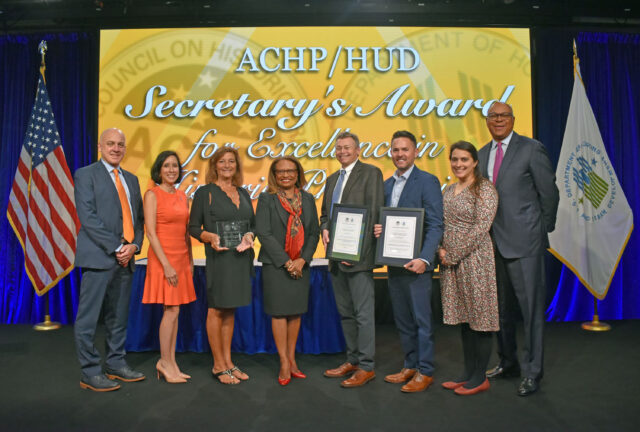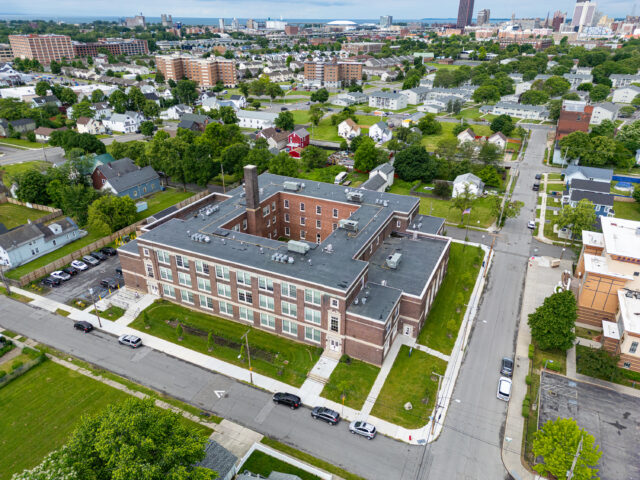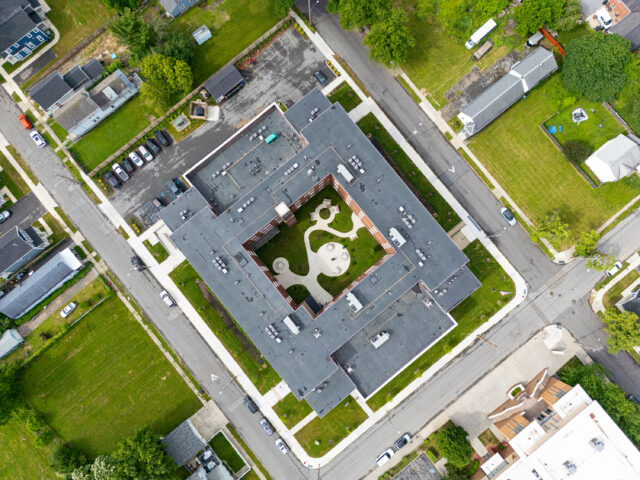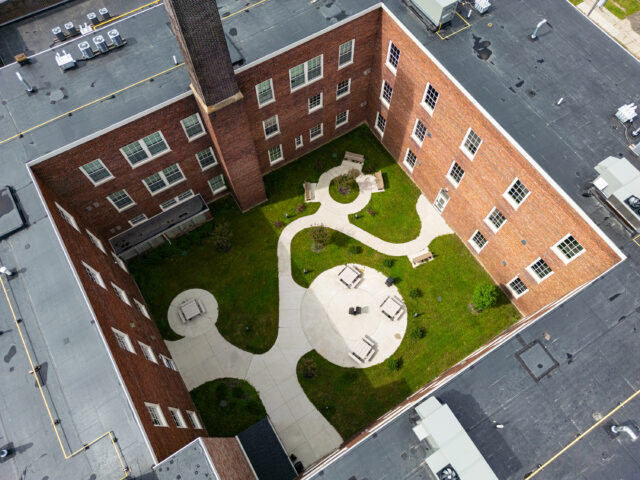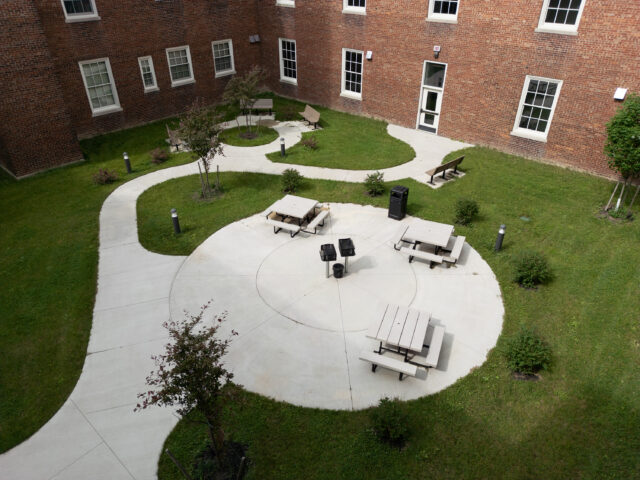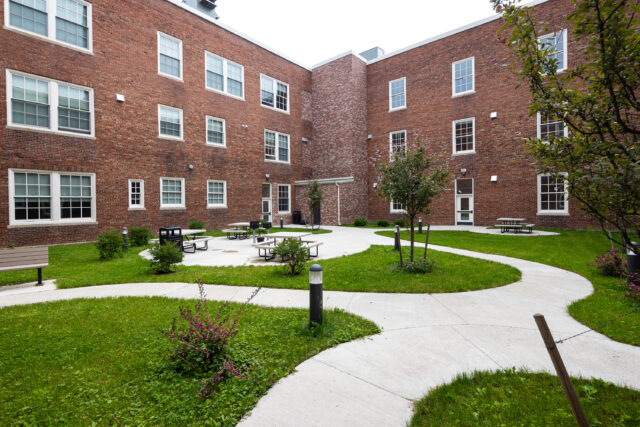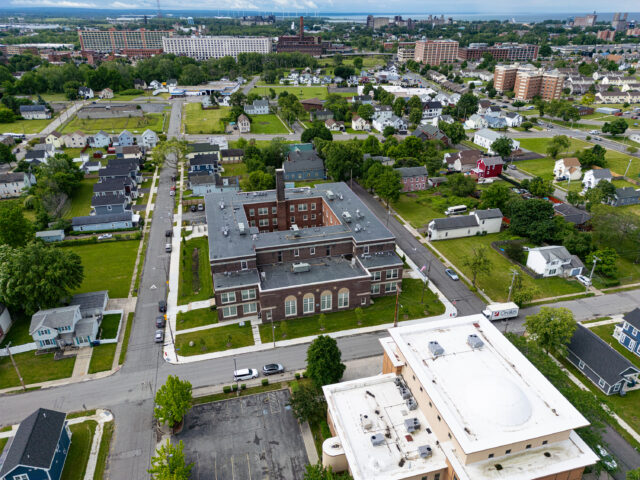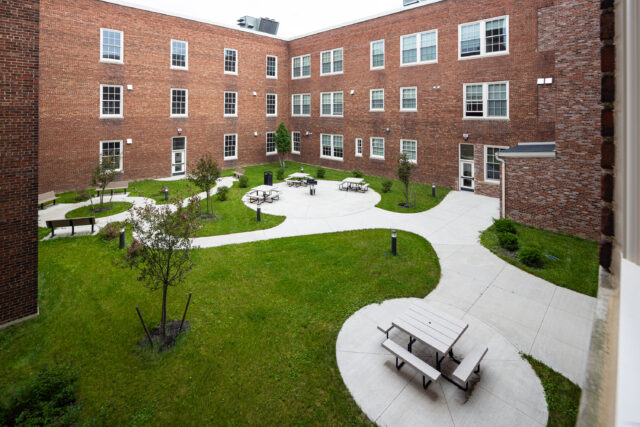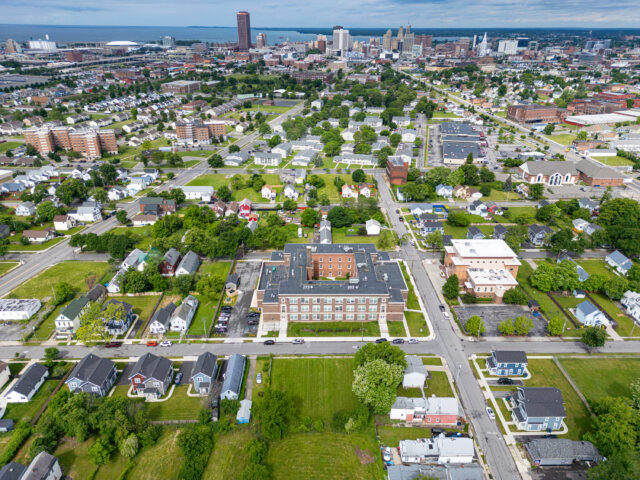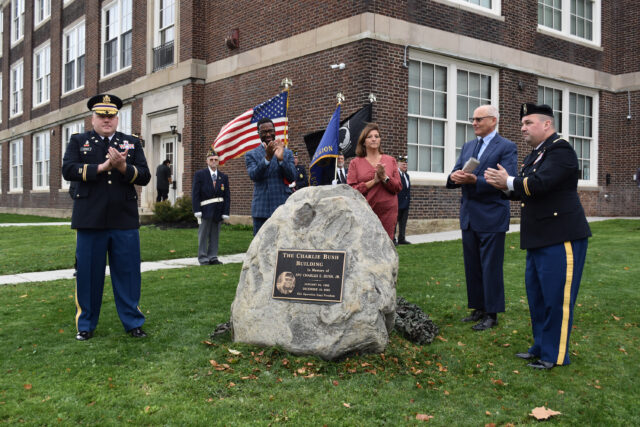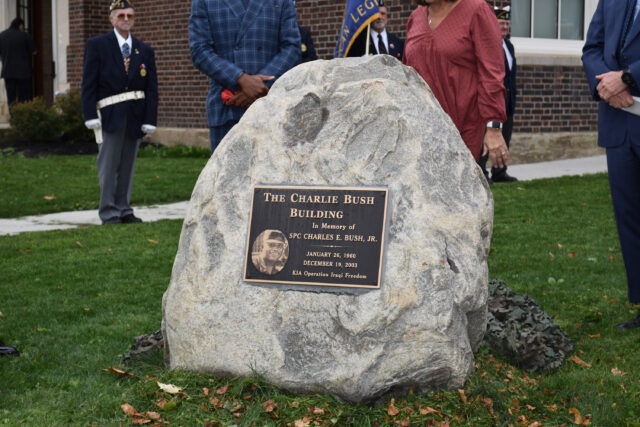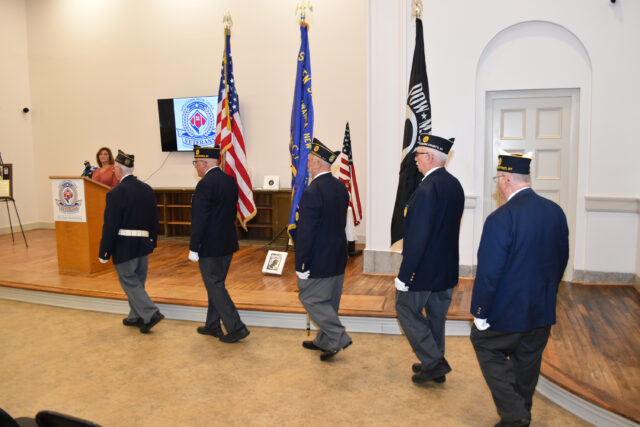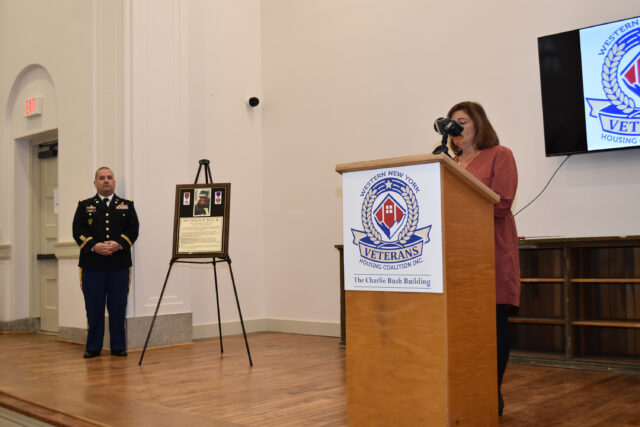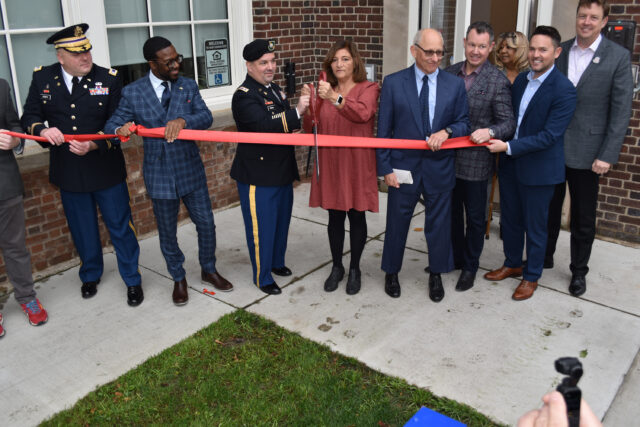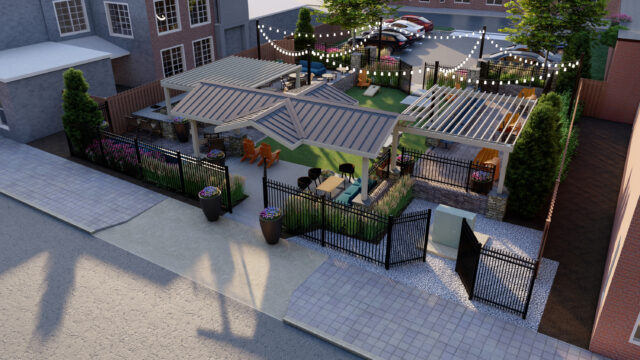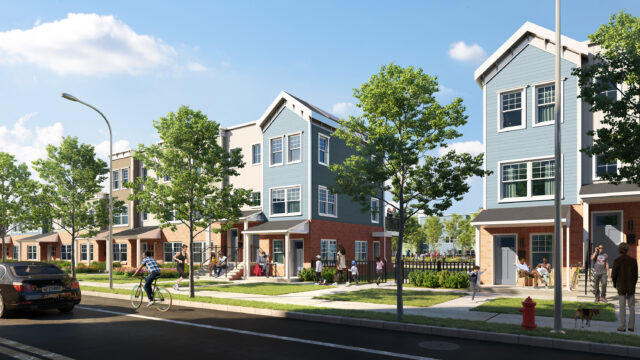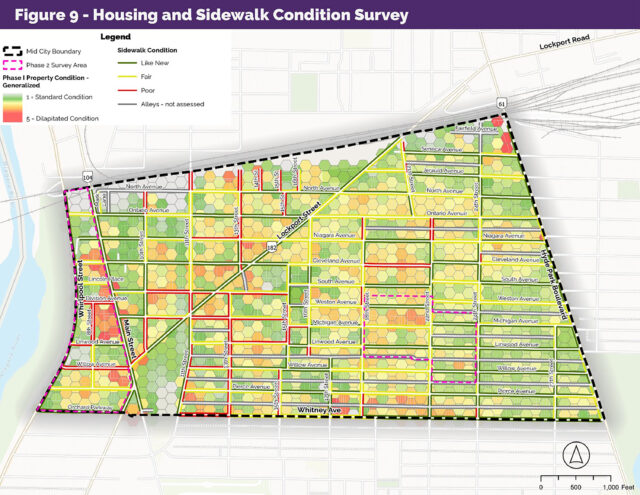Historic School Reborn: From Education to Veterans’ Haven
When first constructed in 1925, this school building responded to the rapidly increasing population of Buffalo. It was one of several courtyard-style schools constructed throughout the city that featured an abundance of natural light and ventilation while still fitting on a compact site. With its Classical Revival architectural style and its brick smokestack visible for miles, the school building served as an inspiration for personal growth in an expanding neighborhood near Buffalo’s thriving industries.
Today, the building has been repurposed and preserved to fulfill the same task for veterans of war, who are its primary residents. The immediate neighborhood now includes new townhome-style housing on once vacant lots, signaling this community’s reemergence.
A Veteran’s Tribute: The Charlie Bush Building Dedication Ceremony
In November 2023, just in time for Veterans Day, the former school building was dedicated as The Charlie Bush Building in honor of SPC Charles E. Bush, Jr., who was killed in action on December 19, 2003, during Operation Iraqi Freedom.
SPC Bush was a foodservice specialist assigned to the 402nd Civil Affairs Battalion in Tonawanda, New York. His awards and decorations include the Bronze Star Medal, the Purple Heart, the Army Service Ribbon, the National Defense Service Medal, and the Army Reserve Components Achievement Medal.
An Award-Winning Project
BPS #75 Adaptive Reuse Project Honored With Award for Historic Preservation Efforts
On September 30, 2024, LaBella proudly accepted the 2024 ACHP/HUD Secretary’s Award for Excellence in Historic Preservation for the adaptive reuse of Buffalo Public School #75. This prestigious award was presented by the Advisory Council on Historic Preservation (ACHP) and the U.S. Department of Housing and Urban Development (HUD) during a special ceremony in Washington, D.C.
The award recognizes projects that successfully advance historic preservation while promoting affordable housing, community revitalization, and economic opportunities for low- and moderate-income families. Special consideration is given to projects that adaptively reuse historic buildings, incorporate HUD funding or financing, and contribute to local community revitalization, all while adhering to the Secretary of the Interior’s Standards for Rehabilitation.
To explore the project further, check out ACHP’s commemorative video below.
Click for Commemorative Video